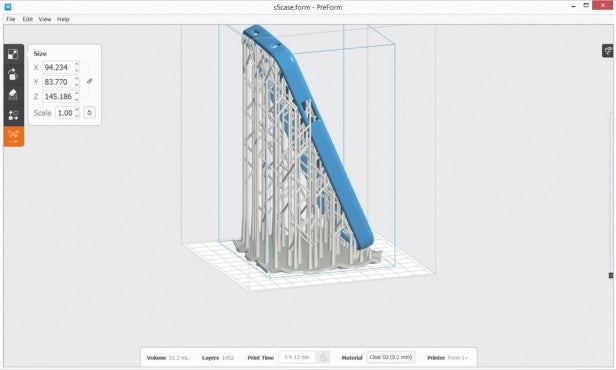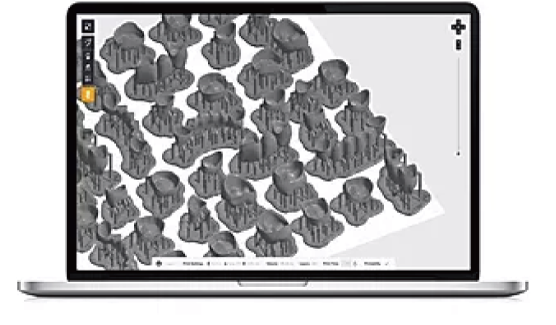

- #FORMLABS PREFORM LAYOUT HOW TO#
- #FORMLABS PREFORM LAYOUT MANUAL#
- #FORMLABS PREFORM LAYOUT FULL#
- #FORMLABS PREFORM LAYOUT SOFTWARE#
On other printers, this will require you to take apart the tank and manually replace the film, which can be time-consuming and generally just a nuisance, but you can simply dispose of the damaged Form 3 tank and replace it with another. There’s a thin sheet of plastic on the base of the tank where UV light will shine through to cure your prints layer by layer, something that comes with a risk of perforation.
#FORMLABS PREFORM LAYOUT FULL#
These tanks can be stored in their original shipping boxes when not in use, even if they’re still full of resin as they come with a UV-protective lid and stack well on top of each other.

These also contain a wiper that runs through the vat when full, mixing the liquid resin and keep the bottom of the tank clear from debris. The resin tank for the Form 3 is an innovative cartridge that can be reused as many times as required and then disposed of if it becomes damaged. If the Form 3 runs into an issue during set up or midway through a print, a diagram of the printer will display exactly what is causing the problem, and how you can fix it, such as if the resin tank has become uncoupled. There are various options to help you keep your printer running at its best with minimal confusion, and each option will walk you through what needs to be actioned with clear, easy-to-read instructions. The control panel located on the front of the machine is hands down the best we’ve ever tested on a 3D printer, being incredibly responsive and well designed. This is likely because this is intended more as an industrial printer and therefore likely to be running on a near-daily basis, but this still feels a tad wasteful if you’re energy conscious.
#FORMLABS PREFORM LAYOUT MANUAL#
Strangely, there’s no manual off/on button located on the machine, so the only way to power down is to unplug the kettle cable from the rear, or switch it off directly at the power source.

You get an easy handle to grab to maneuver this into place, and the hood won’t fall down without being manually closed, so there’s no risk of you slamming your hand in it.

The hood actually folds up using a hinge rather than lifting away from the machine entirely as you typically see with hooded printers. There’s an orange hood to keep fumes from the curing resin from traveling too far, and this also appears to double as additional UV protection against sunlight. The base of the machine that contains most of the mechanisms is black, with an illuminated Formlabs logo located on the bottom left corner. The Formlabs Form 3 printer itself is gorgeous and manages to stand out against rival offerings from brands such as Elegoo and An圜ubic, despite sharing many of the same principles. If you have a business that requires consistent results from 3D printing and you want the process to be as convenient as possible, look no further than the Form 3.
#FORMLABS PREFORM LAYOUT SOFTWARE#
Our review unit came with the Form 3 Finish Kit which retails for $100 (£90 / around AU$140) excluding VAT, though Formlabs also offers the Form Wash and Form Cure that cost $499 (£455 / around AU$690) and $699 (£625 / around AU$950) minus VAT, respectively.Įverything from the machine itself to the software you’ll need to start printing feels like it was created to make 3D printing as efficient and simple as it can possibly be, without losing a sense of luxury. The Form 3 starts at $3,499 (£3,299 / AU$4,800), though recommended extras to clean excess resin from and fully cure the models pushes the price even higher. In that sense, if something like the Elegoo Saturn was a kit car, the Form 3 would be a Mercedes with a premium service package.Īs you’d expect, that level of care comes with a pretty steep price tag. This is a far cry from what Formlabs is offering with the Form 3, which instead offers fantastic customer service and expert care, with some aspects of the machine being modular and disposable.
#FORMLABS PREFORM LAYOUT HOW TO#
There’s an expectation of ‘learn by doing’ with many 3D printers, and if things break you’d order the required spare parts from the printer manufacturer or a third-party retailer and learning how to install them yourself.


 0 kommentar(er)
0 kommentar(er)
